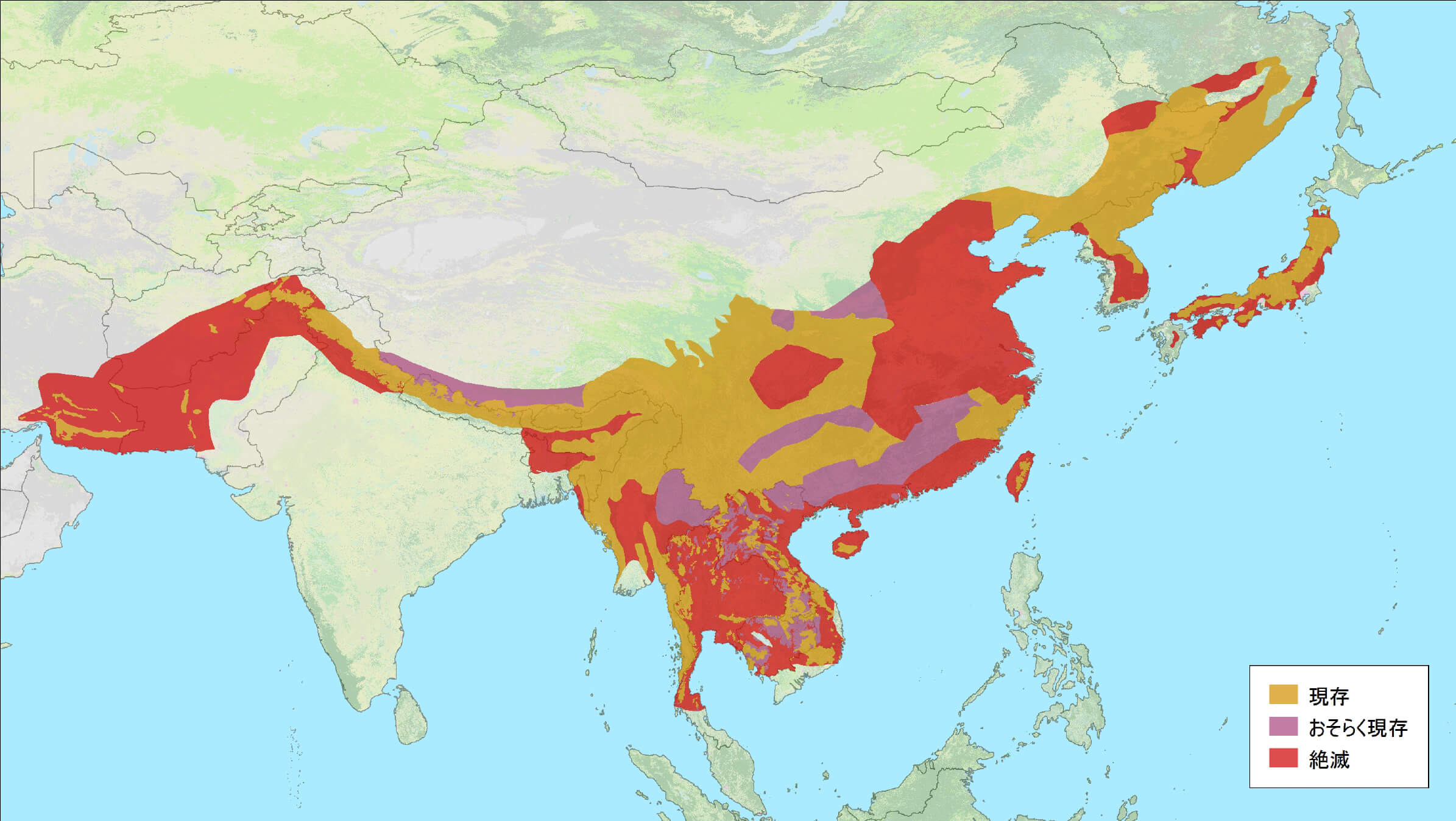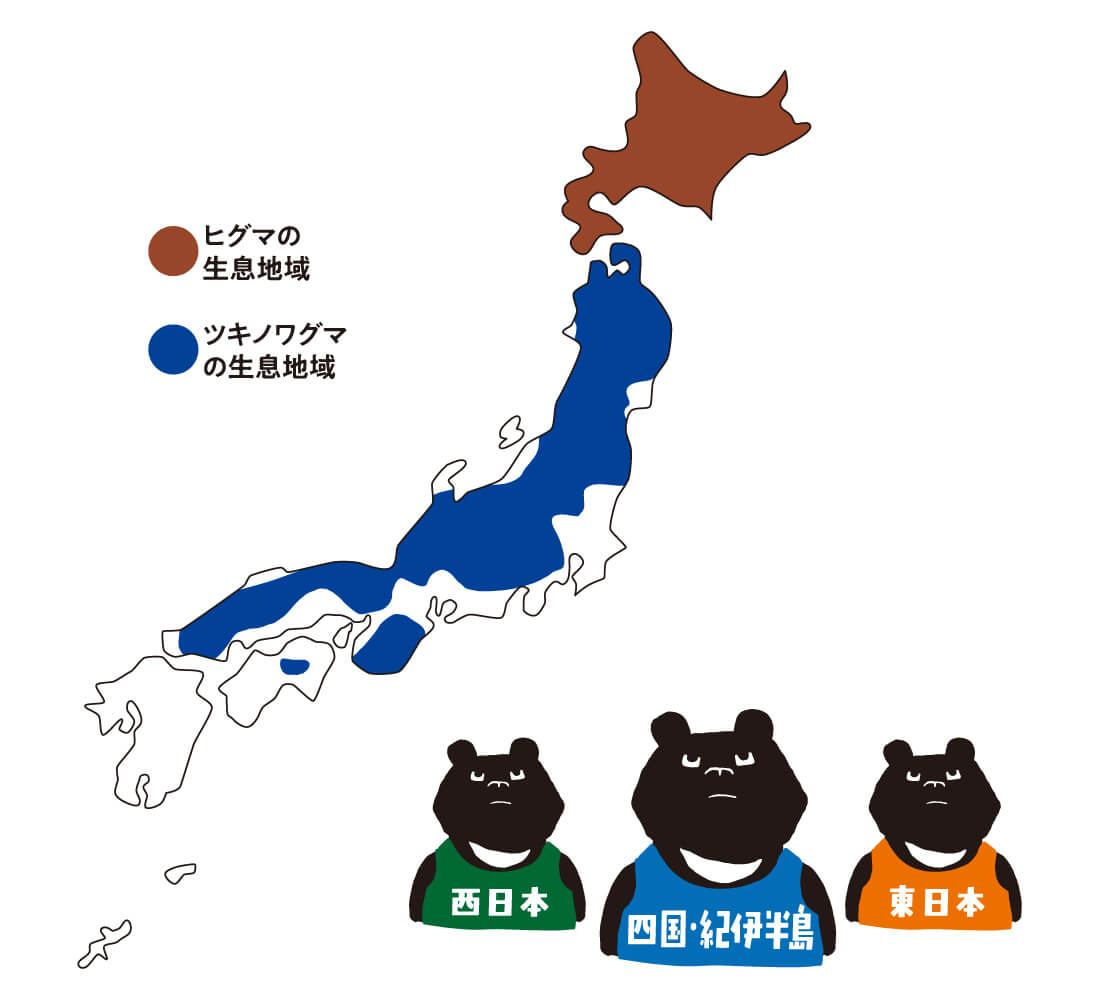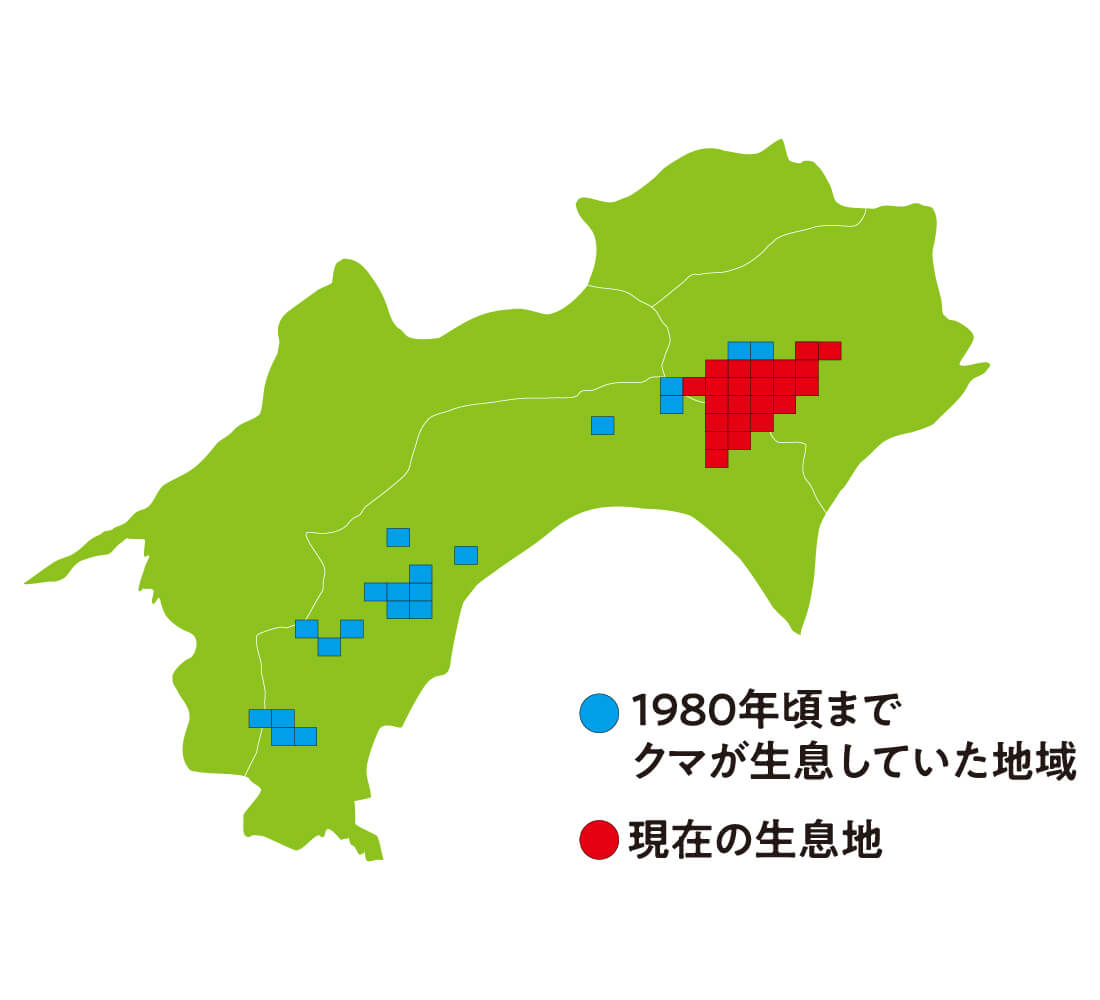What kind of animals are bears?
Planet Earth is actually home to eight species of bears. These species have a common ancestor, Ursavus, a small carnivore that appeared in Europe about 20 million years ago. Ursavus, like many bears today, ate large amounts of plant-based food and wasn't limited to eating meat, despite its classification as a carnivore. Over the years, Ursavus evolved and adapted to different habitats, resulting in the eight species we have today. Among them are polar bears specializing in carnivorousness, giant pandas living off bamboo, sloth bears that love to devour ants, and omnivorous brown bears and Asiatic black bears that prefer to eat plants.
Two of these eight species inhabit Japan. Brown bears live in Hokkaido only, while Asiatic black bears live in Honshu and Shikoku.
Distribution of the Asiatic black bear
Global Distribution
The Asiatic or Asian black bear (Ursus thibetanus) is a forest animal inhabiting the Asian continent. It is widely distributed from Iran in the west to China, North Korea, South Korea, and Japan in the east. It largely resides in mainland Asia, but is also present in Taiwan, Hainan Island in China, and Honshu and Shikoku in Japan.
Asiatic black bears’ population and area of distribution are declining globally, and they are classified as "Vulnerable" on the International Union for Conservation of Nature (IUCN) Red List. They are also listed in "Appendix I" of the Convention on International Trade in Endangered Species of Wild Fauna and Flora (also known as CITES or the Washington Convention). Even in Japan, the Asiatic black bear has been designated as an "Internationally Rare Wild Fauna and Flora Species" by the Act on Conservation of Endangered Wild Fauna and Flora.
It is said that loss of habitat due to forest development and excessive capture for their gallbladder are the main threats to this species.

Distribution in Japan
In Japan today, Asiatic black bears inhabit Honshu and Shikoku. They were once found in Kyushu, but were declared extinct by the Ministry of the Environment in 2012.
It is believed that the Asiatic black bear entered the Japanese archipelago during the last glacial period around 400,000 to 600,000 years ago, when Japan was still connected to the Asian continent. From the continent, they passed through what is now the Tsushima Strait and entered the Kyushu and Chugoku regions, gradually spreading throughout Honshu. Later, when the Japanese archipelago was cut off from the continent, genetic exchange was severed, and the Japanese black bear (Ursus thibetanus japonica) became a subspecies endemic to Japan. Over the course of several hundred thousand years, genetic differentiation has progressed further, and Japanese black bears are now divided in three sub-populations: the Eastern population, which extends east of Lake Biwa; the Western population, from Lake Biwa to Chugoku; and the Shikoku-Kii Peninsula population, including Shikoku and the Kii Peninsula.
In recent years, the range of Asiatic black bears in Honshu has expanded closer to human settlements, and the number of encounters and bear-induced damage is on the rise. On the other hand, in areas such as Shikoku, the number of bears has decreased to the brink of extinction.


